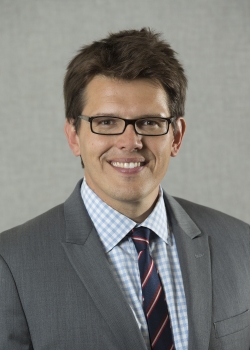How Do You Know When a Problem is Worth Solving?
BYU business profs detail how to “nail” and “scale” innovative ideas in new book
PROVO, Utah – Sep 09, 2014 – Two of BYU’s innovation gurus have a surprising message: most of the nation’s best business schools are failing to teach future managers how to create new businesses. In other words, MBAs aren’t leaving school with the right tools to innovate.
Professors Nathan Furr and Jeff Dyer aren’t alone in this thinking. According to their research, some of the greatest business innovators (such as Tesla’s Elon Musk and Intuit’s Scott Cook) claim they hire people in spite of them having an MBA, not because they have one.
“Everything people learn in a traditional MBA program is great for structured problems characterized by low uncertainty; but innovation is radically uncertain,” said Furr, a professor of entrepreneurship in BYU’s Marriott School of Management. “Management theory is poorly adapted to solve problems of high uncertainty.”
Furr and Dyer aren’t making this argument just to be sensational. They think business schools are missing the mark on innovation and they want to fix it.
In a 10-year study on the world’s best innovators, they found business schools are producing managers that are great at optimizing and executing in an existing business, but they’re not producing managers with the skillset to create innovative new services or products.
Furr and Dyer’s proposed solution: business schools (and companies) need to teach the methods that the best innovators use to conceive, test, and validate new ideas. As part of that process, they need to teach (and implement) four key steps that successful innovators use to solve high-uncertainty problems:
- Create processes to generate and capture new insight.
- Deeply understand customer needs to ensure you nail a problem worth solving.
- Use fast/cheap prototypes to broadly test wide variety of solutions that eventually result in a “minimum awesome product.”
- Experiment with different business models to take solutions to market.
The researchers call this system the Innovator’s Method and they detail how it works in the pages of their new book, by the same name, published by Harvard Business Review Press and released this week.
Using this method, the two innovation experts suggest it is possible to mitigate the risk of innovation that far too often paralyzes new ideas and stunts company growth.
“You don’t want to try and solve a problem that nobody wants solved,” said Dyer, the Horace Beesley Professor of Strategy at BYU. “To take the risk out of innovation you have to test and validate an idea before you invest in it. In other words, nail it before you scale it.”
Furr and Dyer believe that this approach can and should be adopted by companies and implemented from the top-down—which means leaders should change their role from chief decision maker to chief experimenter. But should that ideal be out of the question, individuals can introduce the method to an organization in “stealth mode.”
The key, they say, is to run fast and frugal experiments to turn the uncertainties of new ideas into reassuring facts.
“Most managers hate uncertainty and love facts almost as much as they love saving time and money,” they write in the book. “You can use these tendencies to your advantage.”
The Innovator’s Method is available beginning Sept. 9 and ideas from the book will also be featured in articles at Forbes, Wired, Inc. and Entrepreneur. The book builds on the innovation ideas of Dyer’s 2011 best-seller The Innovator’s DNA, coauthored with Harvard’s Clayton Christensen and MIT’s Hal Gregersen.
Media Contact: Todd Hollingshead (801) 422-8373
Writer: Todd Hollingshead






